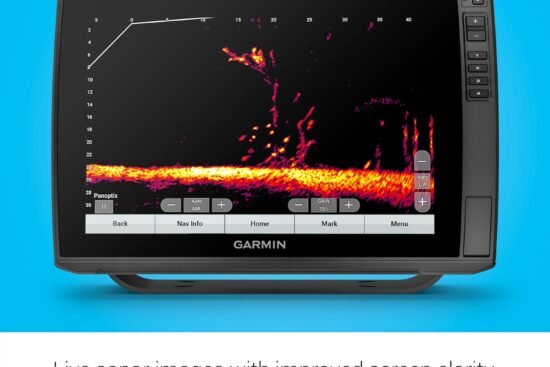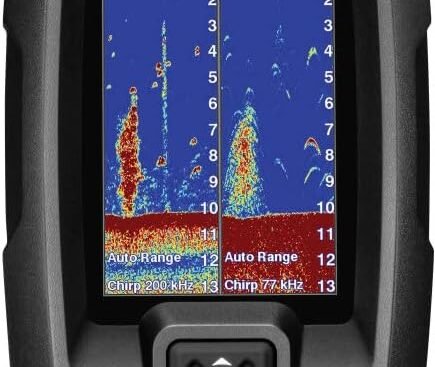
If you’re trying to decide between purchasing a DSLR or a mirrorless camera, it’s essential to understand the key differences between the two. While both types of cameras offer excellent image quality and advanced features, there are distinct characteristics that set them apart. DSLRs, or digital single-lens reflex cameras, have long been the preferred choice for professional photographers, thanks to their optical viewfinders and vast lens selection. On the other hand, mirrorless cameras are known for their compact size, silent operation, and extensive video capabilities. In this article, we will explore these key differences in detail, helping you make an informed decision on which camera type suits your needs.
Size and Weight
DSLRs are typically larger and heavier than mirrorless cameras
When it comes to comparing DSLRs and mirrorless cameras, one of the noticeable differences is the size and weight. DSLRs are generally larger and heavier due to their design and the inclusion of a mirror mechanism. This can make them a bit more cumbersome to carry around, especially if you’re traveling or shooting for extended periods. On the other hand, mirrorless cameras are more compact and lightweight, making them a great choice for photographers who prioritize portability and ease of use.
Viewfinder
DSLRs have an optical viewfinder which shows the actual image through the lens
DSLRs offer an optical viewfinder that allows you to see the scene exactly as it appears through the lens. This provides a clear and natural view, which many photographers prefer. By using mirrors and pentaprisms, DSLRs reflect the light coming through the lens and direct it to your eye, giving you a real-time view. This can be particularly helpful when shooting in bright sunlight or in situations where an electronic viewfinder might struggle to display a clear image.
Mirrorless cameras use an electronic viewfinder which displays a digital representation of the scene
In contrast, mirrorless cameras don’t have the traditional optical viewfinder system. Instead, they use an electronic viewfinder (EVF) that displays a digital representation of the scene. The EVF shows what the camera’s sensor sees, providing an accurate preview of exposure, white balance, and other settings, which can be especially beneficial for novice photographers. While some photographers may miss the optical viewfinder experience, the electronic viewfinder has its advantages too, such as the ability to preview exposure adjustments in real-time.

Autofocus
DSLRs traditionally have faster and more accurate autofocus systems
DSLRs have long been known for their reliable and quick autofocus systems. They typically utilize phase-detection autofocus, which is a proven technology that allows for fast and accurate focusing, even in challenging lighting conditions or when tracking moving subjects. DSLRs excel in situations where precise and responsive autofocus is crucial, such as sports and wildlife photography.
Mirrorless cameras now have advanced autofocus systems with features like eye-detection
While DSLRs have traditionally had the upper hand in autofocus performance, mirrorless cameras have made significant strides in recent years. They now offer advanced autofocus systems that rival or even surpass those found in DSLRs. Many mirrorless cameras employ hybrid autofocus systems that combine both phase-detection and contrast-detection autofocus, providing excellent speed and accuracy. Some models even incorporate eye-detection autofocus, which allows for effortless and precise tracking of a subject’s eyes, perfect for capturing portraits or street photography.
Image Quality
DSLRs generally have larger image sensors which can result in better image quality
In the past, DSLRs had a clear advantage in terms of image quality due to their larger image sensors. The larger the sensor, the more light it can capture, resulting in better dynamic range, improved low-light performance, and greater control over depth of field. DSLRs, especially full-frame models, are still the go-to choice for professionals seeking the highest image quality and maximum control over their shots.
Mirrorless cameras are catching up with DSLRs in terms of image quality as sensor technology improves
However, mirrorless cameras have been catching up rapidly in terms of image quality. With advancements in sensor technology, many mirrorless cameras now boast APS-C or even full-frame sensors, ensuring comparable image quality to DSLRs. The smaller size of some mirrorless cameras may limit the size and resolution of the sensor, which can slightly impact image quality. Nevertheless, for the majority of photographers, the image quality provided by modern mirrorless cameras is more than sufficient for professional or enthusiast-level photography.

Lens Selection
DSLRs have a wide range of lenses available from multiple manufacturers
When it comes to lens selection, DSLRs have a clear advantage. DSLRs have been on the market for a longer time, and as a result, they benefit from a vast range of lenses produced by multiple manufacturers. Whether you’re looking for wide-angle lenses, telephoto zooms, or specialized lenses for various genres of photography, DSLRs offer a comprehensive selection to suit any photographer’s needs. The availability of third-party lenses from trusted brands also adds more options for DSLR users.
Mirrorless cameras have a growing selection of lenses, but it may be limited depending on the camera brand
Mirrorless cameras have been steadily expanding their lens lineup, but they might not match the extensive range of DSLR lenses just yet. However, this is rapidly changing as more manufacturers embrace the mirrorless revolution. Depending on the camera brand you choose, the availability of lenses may vary. Popular mirrorless camera brands like Sony, Canon, Fujifilm, and Nikon now offer a wide range of native lenses, covering various focal lengths and specialties. Third-party lens manufacturers are also jumping on board, providing additional lens options for mirrorless users.
Battery Life
DSLRs tend to have longer battery life due to their larger size
When it comes to battery life, DSLRs have the upper hand. The larger size of DSLR bodies allows for more significant battery capacity, resulting in longer-lasting power in between charges. This is particularly advantageous for photographers who frequently shoot in remote locations or for extended periods where access to charging facilities may be limited. DSLRs’ battery life can usually last through an entire day of shooting without needing a recharge.
Mirrorless cameras have smaller batteries and may require more frequent charging
On the other hand, mirrorless cameras often have smaller bodies, which means they have limited space for batteries. As a result, their battery life tends to be shorter compared to DSLRs. Mirrorless cameras rely on smaller, more compact batteries which may not last as long, especially when using features like continuous autofocus and electronic viewfinders. If you plan on using a mirrorless camera for long shoots, it’s advisable to carry spare batteries or have access to charging options to ensure you don’t run out of power.
Continuous Shooting Speed
DSLRs generally have faster burst rates, allowing for capturing fast-moving subjects
For photographers capturing fast-moving subjects, such as sports, wildlife, or action photography, the ability to shoot at high burst rates is crucial. DSLRs excel in this aspect, offering faster maximum frame rates compared to mirrorless cameras. DSLRs can often achieve burst rates of 10 frames per second or more, allowing you to capture multiple frames in rapid succession, increasing the chances of getting the perfect shot during fast-paced moments.
Mirrorless cameras have improved their continuous shooting speeds but may still lag behind DSLRs
While mirrorless cameras may have initially been criticized for slower burst rates, they have significantly improved in recent years. Many mirrorless cameras now offer burst rates that can rival or even surpass some DSLRs. However, it’s important to note that high continuous shooting speeds can vary depending on the model and brand of the mirrorless camera. If you require the highest burst rates available, DSLRs still hold a slight advantage in this area.
Video Capabilities
DSLRs often have limited video features and may lack options like 4K video recording
Traditionally, DSLRs have not been the top choice for videographers. While they still offer video recording capabilities, they often lack advanced features and options that are essential for video production. Many older DSLRs do not support features like 4K video recording or high frame rates, limiting their video capabilities. DSLRs are primarily designed for still photography, and video features are generally considered secondary.
Mirrorless cameras are known for their video capabilities, offering features like 4K video, high frame rates, and advanced autofocus during video recording
On the other hand, mirrorless cameras have gained significant popularity among videographers, thanks to their advanced video capabilities. Many mirrorless cameras offer 4K video recording, high frame rates for slow-motion footage, and features like in-body image stabilization (IBIS) that ensure smooth and steady handheld footage. Additionally, mirrorless cameras often excel at autofocus during video recording, allowing for quick and accurate tracking of subjects. For those primarily interested in video production or vlogging, mirrorless cameras are often the preferred choice.
In-Camera Image Stabilization
Most DSLRs lack in-body image stabilization and rely on lens stabilization
When it comes to image stabilization, most DSLRs rely on lens stabilization systems rather than in-body image stabilization (IBIS). Lens stabilization adjusts the optical elements within the lens itself to compensate for camera shake and create sharper images. However, this means that image stabilization is limited to lenses that have built-in stabilization, and not all lenses offer this feature. If you require image stabilization in a DSLR system, you’ll need to invest in lenses with stabilization capabilities.
Mirrorless cameras often have in-body image stabilization, allowing for stabilized images with any lens
One of the significant advantages of mirrorless cameras is the inclusion of in-body image stabilization (IBIS). With IBIS, the camera’s sensor is stabilized, allowing for handheld shots with reduced camera shake across any lens attached. This means that even if you use vintage lenses or lenses without built-in stabilization, you can still benefit from image stabilization. IBIS in mirrorless cameras provides flexibility and convenience, particularly for photographers who prefer using a variety of lenses without stabilization.
Accessibility of Settings
DSLRs generally have more physical buttons and dials for quick access to settings
DSLRs are often favored by photographers who prefer a more tactile and intuitive approach to adjusting camera settings. DSLR bodies typically feature dedicated physical buttons and dials for frequently used settings such as ISO, shutter speed, aperture, and exposure compensation. This allows for quick and direct access, even without needing to navigate through menus or touchscreen controls. The easy accessibility of settings on DSLRs is highly valued by photographers who prefer a hands-on shooting experience.
Mirrorless cameras often rely on menus and touchscreen controls for changing settings
In contrast, mirrorless cameras often feature fewer physical buttons and rely more on menus and touchscreen controls for changing settings. While mirrorless cameras still offer physical controls for essential settings, the emphasis is usually placed on more customizable menus and touchscreen interfaces. This can be advantageous for photographers who prefer a more customizable and personalized shooting experience, allowing them to fine-tune the camera settings according to their preferences. However, it may take some time to navigate through menus and submenus, especially for beginners or photographers who prefer a more straightforward control layout.
Overall, both DSLRs and mirrorless cameras have their distinct advantages and disadvantages, and the choice between the two ultimately depends on your specific needs and preferences as a photographer or videographer. Consider factors such as size and weight, viewfinder type, autofocus performance, image quality, lens selection, battery life, continuous shooting speed, video capabilities, image stabilization, and accessibility of settings when making your decision. Whether you opt for the tried-and-true DSLR or embrace the innovative mirrorless technology, both camera systems offer a wide range of options to cater to different shooting styles and creative requirements.




